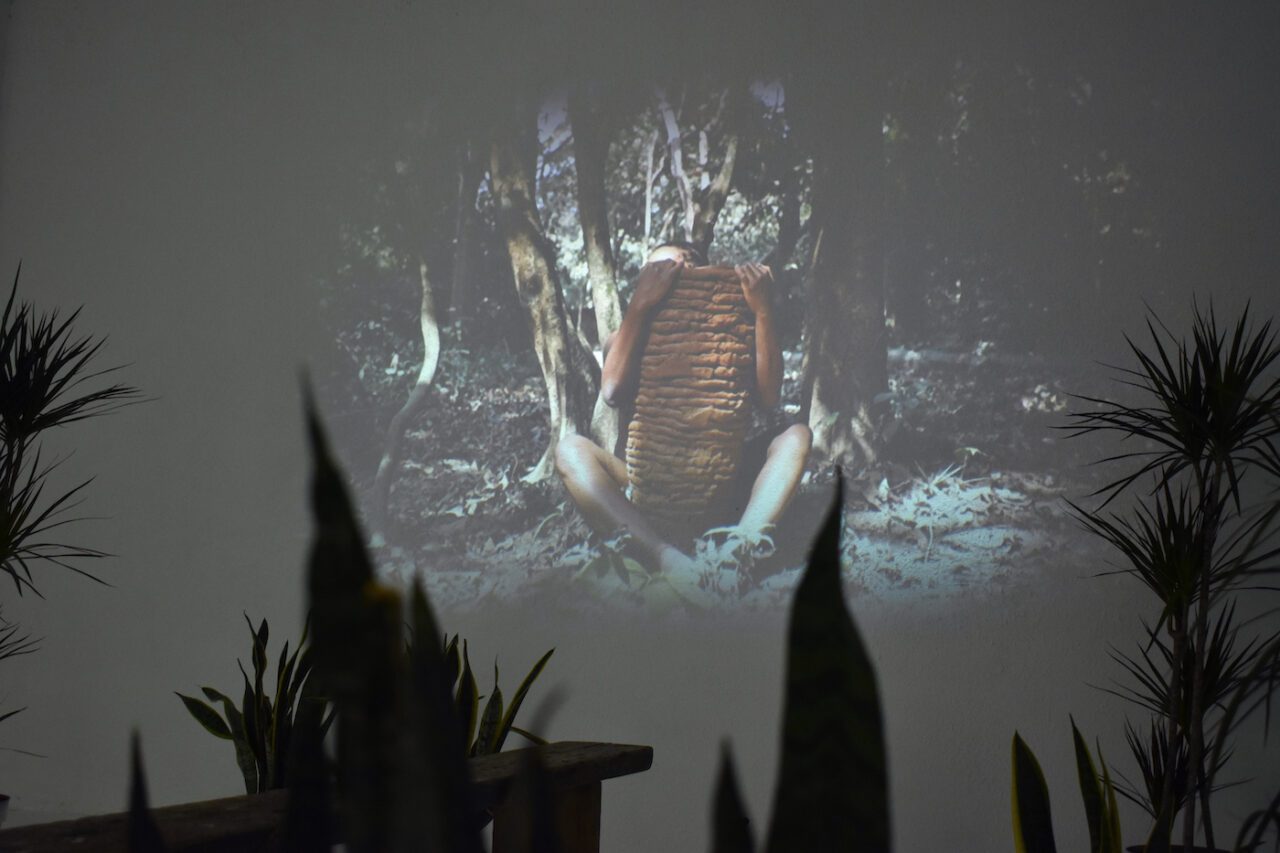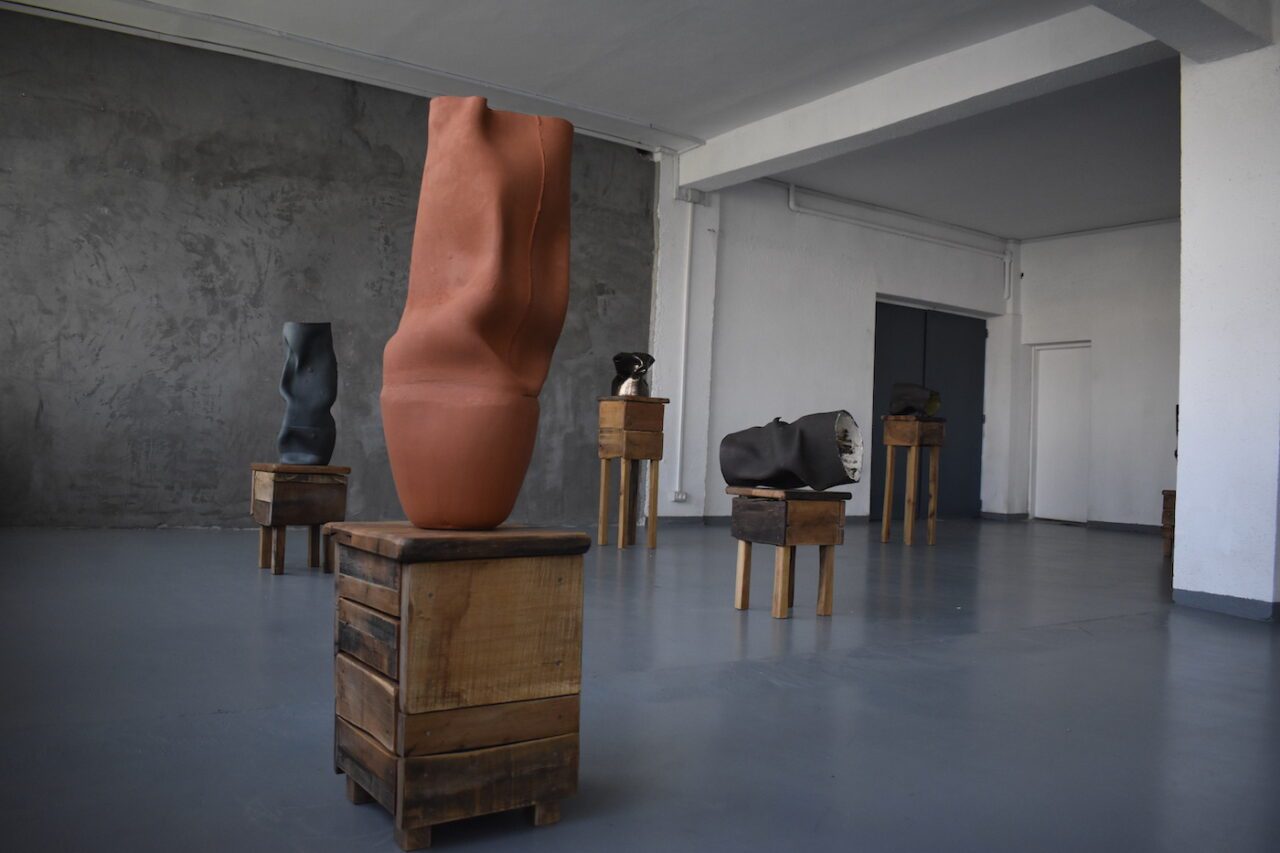



In her first solo show the British-Nigerian artist displays her delicate and tender clay hearths, and here she offers her insights on the commons and spirituality.
“You can smell the pieces. Go and touch them. But if you break them, you buy them.” There is a warmth to Ranti Bam’s demeanour, succinctly juxtaposed with a curt, matter-of-fact characteristic, that instantly eradicates any doubt of disingenuity.
Life began in Lagos for Bam, before moving to London where she spent the best part of her childhood. She has since lived in Greece, Dakar, London and is now based in Paris. Though we’re meeting in Bucharest, for the opening of her first solo show, where I am afforded delicate instances and opportunities to get to know the artist and ceramicist.
With clay as her medium of choice, Bam’s artistic approach is fundamentally sensually based, considering the energetic value held in all humans, objects, and ultimately the earth itself. Environmental considerations manifest in her work, as she considers clay as an immediate connecting point with her natural surroundings. Bam views her practice through a curative lens that embodies a planetary conscience, facilitating the necessary and urgent healing between humans and their natural habitat, adopting animist belief systems.
“Women create the commons,” she tells me, referring to writings on eco-feminism by Silvia Federici. She also references clay-making practices in West African contexts which have typically been led by women. Indeed, Bam draws on Yoruba understandings of gender duality, where each individual is ultimately made up of man and woman, promoting an understanding of femininity that extends beyond the social.
“The feminine holds space, but we are lacking those hearths in society;” Bam shares, alluding to feminine centred communes and nexus points, which are also how she refers to her objects. An apt and timely reminder, in the context of a self-imploding cisheteropatriarchal hegemony.
We discuss her Muslim upbringing, and other faith-based practices, yet Bam critiques how spirituality is presented in these contexts, suggesting that “my religion is physics.” The translation for the Latin word “inspirare” means “to be filled with spirit”, she says. It is through this lens of spirituality that Bam creates and imagines, which she calls “inspired action”: being and doing from awareness.
What emerges through this outlook is a dialogue between the known and the experienced, combining body and intellectual knowledge, synthesised with the power of spirit – re-imagining empiricism through the lens of African spirituality.
She has been diving into Yoruba culture to explore her sources. But she also mentions being influenced by Abraham Hicks, who she describes as the closest thing you get to speaking to God. She also names author Joe Dispenza, and philosopher Alan Watts as influences.
The artist’s universe reflects the richness and multitude if these influences. Upon arriving on the third floor of an abandoned warehouse adjacent to a major highway junction, there is something quite special, if not mesmerising, about seeing a vast open space, solely filled with Bam’s hearths. The works on display are part of a series titled Ifa, at once referring to Ìfàá, meaning “to pull close” in Yoruba, and Ifá, the Yoruba system of divination.
Curated by Raphael Guilbert, there are well over a dozen works presented on wooden stools, akpoti, which are normally used in clay-making processes. Bam tells me that the pieces in this exhibition are a token of gratitude to Gaia as well as a thank you to her ancestors for introducing her to the material and medium.
The spatial layout of the show succeeds in inviting guests to gather. These new works bare similarities with Bam’s sculptures and reinstate the artist’s playfulness with the medium through folds and bends with a determined fluidity and sensuality, and moments of dramatic spontaneity. A number of works break with cracks and holes, balancing gracefully like columns, even in their intensely lopsided forms.
There’s a clear tenderness to the work, bringing a sense of aliveness to the objects, and a delicate edge to the material in its fired form, creating a continuous narrative between process and presentation. Yet amidst the rough and raw sculptures, a few of the hearths boast a glossy metallic finish – somewhat seductive, albeit in a slightly obvious way.
A second room features a two-channel video installation of the Osogbo Sacred Grove where Bam has spent time for the conception of this series. This offers a welcome balance to the exhibition, helping to root the work.
Bam’s show is the latest from Catinca Tabacaru Gallery, whose artist roster includes several names from Africa, many working conceptually around highly pertinent socio-planetary challenges. Tabacaru herself is particularly eager to mention how many of these artists have exhibited at biennales this year, notably Terrence Musekiwa, whose works are on display at the Zimbabwean pavilion at the Venice Biennale, and which were part of Dak’Art, earlier this year.
Departing the show, there’s a certain peace that percolates through the atmosphere, perhaps brought about through the necessary patience that must be applied to such a demanding creative process. There’s a feeling of oneness that comes from this exhibition, and a new understanding of how both, the artist and her objects, are the vessels through which such oneness and creativity can flow.
Ranti Bam: Common Ground at Catinca Tabacaru Gallery in Bucharest, Romania runs through 08 Oct 2022.
Tobi Onabolu is an award-winning Filmmaker, Poet, Creative Director, and Cultural Strategist focused on pan-Africanism through storytelling, healing, collaboration, and critical thought.
FEMALE PIONEERS
Une expérience multiforme des Letters to my Childhood d'Immy Mali présentée en six chapitres.
More Editorial